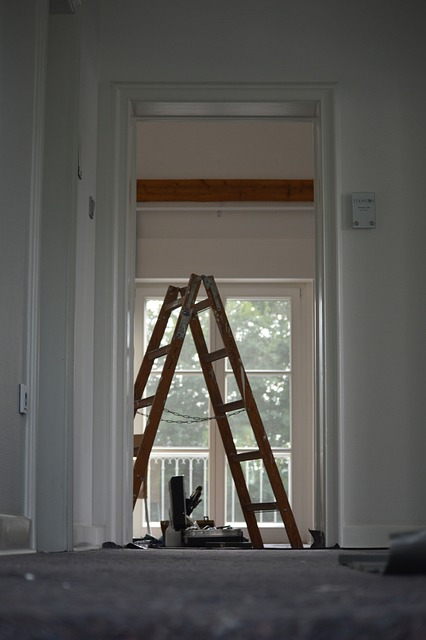Home renovations can increase the comfort, value, and aesthetic appeal of your home. However, one often overlooked aspect of home improvements is how they affect property taxes. When you renovate your home, certain changes may increase the assessed value of your property, which, in turn, can lead to higher property taxes. This guide provides an in-depth look into how different types of renovations impact property taxes, how tax assessments work, and strategies for managing the potential tax increase that comes with home improvements.
1. Understanding Property Taxes and Assessments
Before diving into how renovations affect property taxes, it’s important to understand the basics of property taxes and how they are calculated. Property taxes are levied by local governments (city, county, or municipality) to fund public services such as schools, roads, and emergency services.
a. Property Tax Calculation
Property taxes are typically calculated by multiplying the assessed value of your home by the local tax rate (also known as the millage rate). The formula looks like this:
- Assessed Value: This is the dollar value assigned to your property by a government tax assessor. It’s usually a percentage of the market value, depending on local tax laws.
- Tax Rate (Millage Rate): The tax rate is expressed in mills, where one mill represents one-tenth of one cent. The rate is set by local taxing authorities.
b. Property Tax Assessment Process
Local tax assessors periodically assess the value of properties in their jurisdiction. The assessed value is based on several factors, including the size, location, age, and condition of the property. In many regions, assessors use a combination of market sales data, the cost to rebuild the home, and income potential (if applicable) to determine the assessed value.
When renovations are made to a home, especially those that increase its market value, the tax assessor will likely re-evaluate the property, which can result in an increase in the assessed value and, consequently, higher property taxes.
2. Types of Home Renovations That Impact Property Taxes
Not all home renovations will affect your property taxes equally. The extent to which your property taxes increase depends on the type and scope of the renovation. Here’s a breakdown of the types of home improvements that are most likely to result in higher property taxes.
a. Major Structural Additions
One of the most common ways to increase property value—and property taxes—is through major structural additions. Adding square footage to your home increases its overall market value, which is reflected in the assessed value.
- Room Additions: Whether you're adding an extra bedroom, a sunroom, or extending the living space, any significant increase in square footage will likely lead to a higher assessment.
- Finished Basements or Attics: Converting an unfinished basement or attic into livable space increases the functional square footage of your home, which could lead to a higher tax bill.
- Garages and Sheds: Building a new garage or large storage shed adds to your property’s value and is typically factored into the assessment.
- Home Extensions: Extending a kitchen or bathroom or adding additional space to existing rooms can also increase the value of your home, which will likely affect your property taxes.
b. Renovations That Upgrade the Home’s Utility
Upgrading essential parts of your home, such as the plumbing, electrical systems, and HVAC (heating, ventilation, and air conditioning), can increase the assessed value of your home. These upgrades are considered long-term investments that increase both functionality and market value.
- Plumbing Upgrades: If you replace old plumbing with new systems, especially if you increase water capacity or improve efficiency, this can be seen as an upgrade that increases the value of the home.
- Electrical Upgrades: Homes with modern, updated electrical systems are more valuable because they are safer and more efficient. Tax assessors may take this into account when reassessing your home.
- HVAC Systems: Installing a new energy-efficient HVAC system not only reduces utility costs but also enhances the property’s overall value.
c. Adding High-End Features and Amenities
Adding luxurious or high-end features to your home can also raise its market and assessed value. These additions often fall under the category of lifestyle upgrades, which, while not necessary, are desirable and increase the home's appeal.
- Swimming Pools: Adding a swimming pool can significantly boost your property’s value, depending on your location. In warmer climates, a pool may add more value than in colder regions, but in either case, it often results in a higher assessment.
- Home Theaters: Building a dedicated home theater or entertainment room can increase your property’s luxury factor and result in a higher tax bill.
- High-End Kitchens and Bathrooms: Kitchens and bathrooms are the most scrutinized parts of a home during an assessment. High-end materials like granite countertops, custom cabinetry, and luxury appliances can increase the assessed value.
d. Energy-Efficient Improvements
Many homeowners opt to make energy-efficient upgrades to reduce energy costs and increase their home’s sustainability. While these upgrades can increase property value, some local governments offer tax breaks or incentives for eco-friendly improvements, which may offset an increase in property taxes.
- Solar Panels: Installing solar panels increases the value of your home but could also lead to a higher assessment. However, many jurisdictions offer tax credits or exemptions for solar energy installations.
- Energy-Efficient Windows: Replacing old windows with energy-efficient ones improves the insulation of your home, which increases its value.
- Green Roofing: Installing a green or energy-efficient roof may lead to a higher assessment, though some areas offer incentives to reduce the tax burden.
e. Cosmetic Renovations
While purely cosmetic renovations, such as repainting the walls or replacing carpets, generally won’t trigger a reassessment, more substantial cosmetic changes can affect property taxes.
- Landscaping: Upgrading your landscaping, such as installing new lawns, gardens, or outdoor patios, can increase curb appeal and boost market value.
- Exterior Facades: Replacing siding, adding stone veneers, or upgrading the exterior appearance of your home can lead to a higher valuation.
- Decks and Patios: Adding a new deck or patio, or significantly upgrading an existing one, can add value to your home.
3. How Property Tax Reassessments Work After Renovations
When you make significant renovations, local tax assessors may conduct a reassessment of your property’s value. The process of reassessment varies depending on the region, but here’s how it typically works:
a. Permit-Based Reassessments
In many areas, tax assessors track home improvements through building permits. When you apply for a permit to renovate your home, the local government is notified of the changes, which often triggers a reassessment. For example, if you add a new bathroom, the building permit you obtained for the renovation might alert the tax assessor to reassess your home.
b. Periodic Reassessments
Some regions conduct periodic reassessments of all properties, regardless of whether renovations have been made. During these assessments, tax assessors may visit your home or review public records to determine if any changes have been made that would affect the property’s value.
- On-Site Assessments: Some assessors will visit your home to evaluate the extent of your renovations. They’ll check for structural changes, additional square footage, and any new features that may impact the home’s value.
- Sales Comparisons: If the assessor doesn’t conduct an on-site visit, they may rely on recent sales data from similar homes in your neighborhood. If comparable homes with similar renovations have sold for more, this could lead to a higher assessment of your property.
c. Full vs. Partial Reassessments
Some municipalities only reassess the value of the portion of your home that was renovated. For instance, if you remodel your kitchen, they may only increase your assessment based on the value added by the kitchen, rather than reassessing the entire property. In other areas, any significant renovation could lead to a full reassessment of the entire home.
d. Delayed Tax Increases
In some cases, the increase in property taxes due to renovations may not be immediate. Local tax authorities may take several months or even years to reassess the property, meaning that you could see a delayed tax increase after completing your home improvements.
4. Tax Breaks, Exemptions, and Credits for Renovations
While many renovations increase property taxes, there are certain types of home improvements that may qualify for tax breaks, exemptions, or credits. These incentives are designed to encourage specific types of renovations, such as energy-efficient upgrades or improvements that make homes more accessible.
a. Energy Efficiency Tax Incentives
As mentioned earlier, some jurisdictions offer tax breaks for energy-efficient home improvements, such as installing solar panels, upgrading insulation, or replacing windows. These tax incentives can help offset the increase in property taxes that may come with a higher assessment.
- Federal Solar Tax Credit: The U.S. federal government offers a tax credit for homeowners who install solar panels. This credit can be used to reduce the amount of income tax you owe, which helps counterbalance the increase in property taxes.
b. Homestead Exemptions
Some states offer homestead exemptions, which provide property tax relief for homeowners who use their property as a primary residence. These exemptions often apply to a portion of the home's value, lowering the assessed value and, consequently, reducing property taxes.
c. Historic Property Exemptions
If you own a historic home, some regions offer property tax exemptions or freezes for renovations that preserve the property's historic character. These programs are designed to encourage the restoration and preservation of historically significant homes.
d. Accessibility Improvements
Renovations that improve a home's accessibility for disabled individuals or senior citizens may qualify for tax breaks in some areas. This includes adding ramps, widening doorways, or installing accessible bathrooms.
5. Managing Property Tax Increases After Renovations
While you may not be able to avoid a tax increase altogether after renovating your home, there are steps you can take to manage the potential impact on your property taxes.
a. Plan Renovations Strategically
If you're concerned about a large jump in your property taxes, consider planning your renovations strategically. For example, you may want to spread out your home improvements over several years, rather than making all changes at once. This can help reduce the immediate impact on your property taxes.
b. Appeal the Assessment
If you believe that your home has been over-assessed after renovations, you have the right to appeal the property tax assessment. During the appeal process, you can present evidence, such as comparable property sales, to argue that your home’s value has been overestimated.
c. Consult with a Property Tax Specialist
A property tax specialist can help you navigate the complexities of how home renovations affect property taxes. They can provide advice on the potential tax impact of your renovations and assist in appealing an assessment if necessary.
Home renovations can significantly enhance your living space and increase the value of your property. However, it’s important to understand that these improvements can also lead to higher property taxes. By knowing which types of renovations are likely to impact your property taxes, how the reassessment process works, and what exemptions or credits may be available, you can better manage the financial implications of home improvements. Planning your renovations carefully and consulting with professionals can help you enjoy the benefits of your upgrades without facing an overwhelming increase in your property taxes.




No comments found.